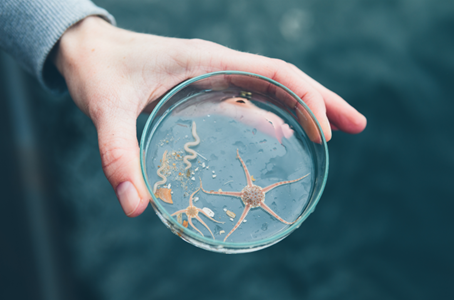When it was founded in 1999, VLIZ was mandated to act as a facilitator to the marine sciences without conducting research itself. This was to avoid competition with the fragmented landscape of research units at universities and scientific institutions. The VLIZ staff, recruited with funds from the Flemish government, could thus fully devote themselves to sometimes time-intensive, specific but much-needed support activities, often with impact far beyond the borders. This would prove to be a particularly successful strategy for the young institute.
One such facilitation assignment was the development of a VLIZ Marine Data & Information Center (VMDC). In addition to providing data-technical support to researchers at home, VMDC soon focused on developing international databases, particularly in the field of marine biology. From the need to create a unified species register, initially only for the North Sea, VLIZ started rolling out a taxonomic data register, managed within the Aphia data infrastructure. That expertise and dynamism in managing biological data of ocean and seas, gradually commanded respect from the "big brothers" on the international scene.
It allowed Aphia to further develop into a consolidated taxonomic data infrastructure. Thus, it was allowed to serve as data, communication and information center within the prestigious and ambitious European MarBef project ('Marine Biodiversity and Ecosystem Functioning': 2004-2008), which would give rise to the creation of the European Marine Species Register in 2004. Partly as a result, VLIZ was assigned a central role within the European LifeWatch event (providing a Species Information Backbone) for marine biodiversity.

VLIZ also sought and found affiliation with the worldwide Census of Marine Life network (CoML; 2000-2010) and with the Ocean Biodiversity Information System (OBIS), a distributed database on the occurrence of marine animals and plants worldwide. ERMS became WoRMS, the World Registry of Marine Species (WoRMS) in 2007, and grew to become the best known and most widely used web interface on Aphia.
Chair WoRMS prof. dr. Shane T. AHYONG: "When WoRMS was established 15 years ago, no one imagined how influential it would become. It has succeeded well beyond expectations and is now the global standard for marine species names. VLIZ is to be commended for its foresight in establishing and developing such an important knowledge tool."
The results can be seen. More than two decades after the first tentative steps, the VLIZ-managed WoRMS is the standard for marine species worldwide. WoRMS provides data to the Catalogue of Life, the most complete consistent list of life forms on Earth. All WoRMS content is linked to one or more of the more than 400,000 references available in the system, and is made available with the voluntary help of a large number of taxonomic experts worldwide. However, collaborations with existing quality databases such as FishBase and AlgaeBase also result in a great deal of input. To date, WoRMS includes 242,337 valid species names (42,000 of them with photo) and has more than 400 registered institutional users. This translates into increasing mentions of WoRMS in publications, with the counter at 7051 by the end of 2022. But it doesn't stop there. In addition to scientists, policy makers and companies, players from the broad social field worldwide know how to find the VLIZ WoRMS data management team, looking for teaching materials, material for quiz programs, info for documentaries,... A mention on the 'Oceans' poster, annexed to the BBC Blue Planet II documentary is one of the examples. WoRMS also receives attention in the press - including an annual campaign that highlights a selection of the average 2050 newly discovered species each year. WoRMS has also been recognized as a "UN Ocean Decade Project Action," under the call sign "ABC WoRMS.
Co-chair WoRMS, dr. Christopher BOYKO: “The editors of WoRMS work on the database for two reasons. First, having complete datasets is incredibly useful for their day-to-day research. Second, because they know that their work on this database will be amazingly useful for others. We are grateful to the community of editors for giving so generously of their time.”
A VLIZ data management team keeps the register up to date. It can rely on the indispensable help and expertise of a network of 312 taxonomic WoRMS editors, specialists in 45 countries and 226 institutes. A steering committee consisting of 12 elected members takes care of the daily management and draws the lines for the future. Whereas WoRMS initially covered only taxonomic information, over the years info on species, distribution, characteristics, naming has been added. The past five years have also seen the launch of "thematic groups," such as the World Register of Introduced Marine Species (WRIMS), the World Register of DeepSea Species (WoRDSS) and AlgaeTraits, a database of seaweed species characteristics.
The intense collaboration maintains a global and highly active network, with some four hundred "edits" to the system per day. A community that allows VLIZ - as a small institution - to play a significant role. What the future will bring is still unclear, but from the many stories told on the occasion of the 15th anniversary, a high level of ambition is already apparent. Or how a small institute can still carry a lot of weight!